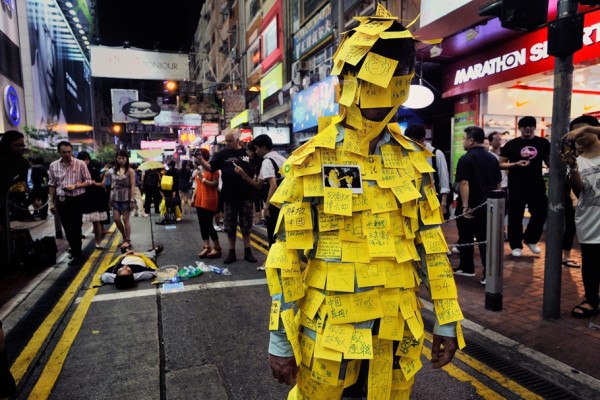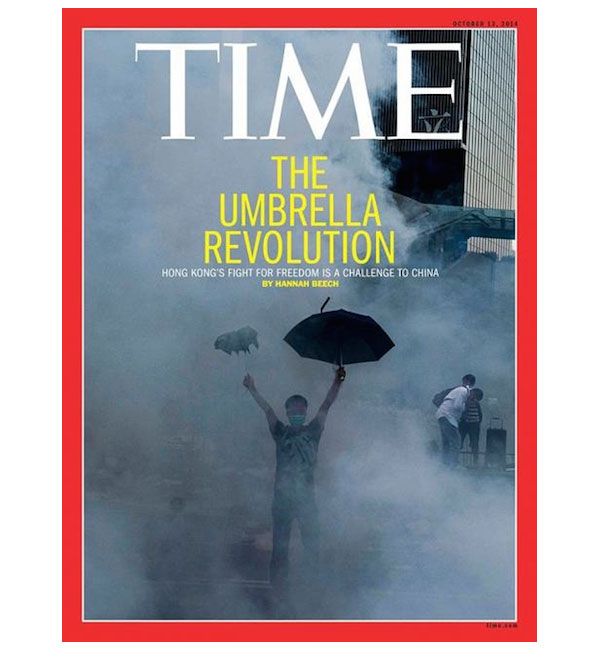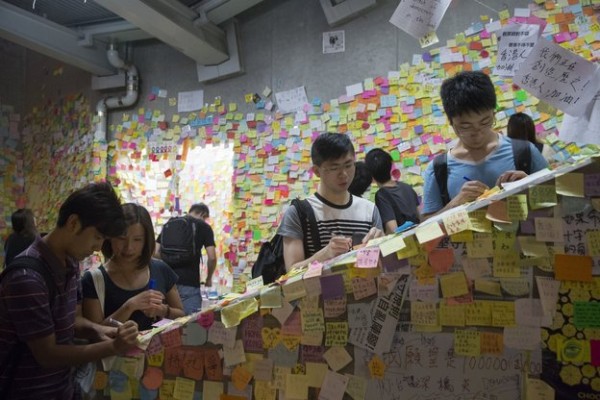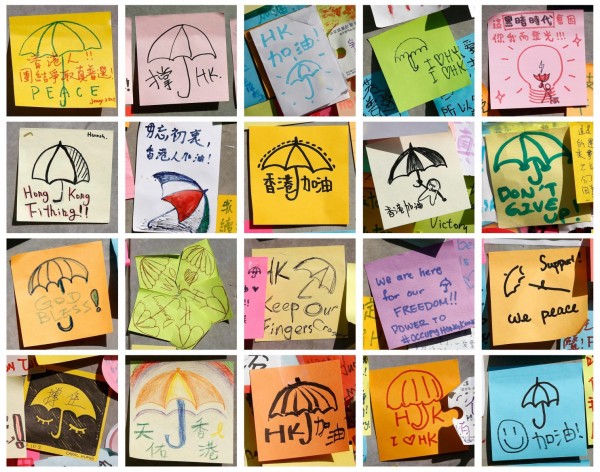Notes
Hong Kong: He Says Umbrella Revolution, She Says Post-it Note
Ever quick with a label to brand a news story or a visual symbol to give a movement a signature, Western media jumped out immediately to peg the Hong Kong democracy protests as, well…
If the umbrella is more of a functional item, a tear gas prevention device we could have seen in Taksim or Maidan Square, the Post-It note is more reflective of the word, the voice, a multiplicity of voices — more painstaking and social in the old fashioned way. At the same time, these notes also reflect how a political movement builds iteratively, forms layers and organically expands.
I’m not that familiar with the Hong Kong resistance. I am familiar, though, with the photo at the top of this post. It was taken in Causeway Bay, Hong Kong, in June 2011 by photographer Mark Leong and was part of the Open Society Foundation’s Documentary Photography project, Moving Walls edition 21. It features a young artist who invited people to place notes on him to protest the Chinese and the Hong Kong leadership on the 22nd anniversary of the Tiananmen Square uprising. Besides literally animating these messages and the people’s discontent, it also provides a timeline establishing how the employment (or deployment) of the Post-It note in the democracy struggle was already in motion at least three years ago.
The caption begins:
Demonstrators write messages on pieces of paper as notes hang on a wall outside the outside the Central Government Offices in Hong Kong, China.
WAPO has a very good photo post that speaks to both symbols, the role of the arts in Hong Kong culture and the artistic core of this protest movement. For example, Professor Colette Gaiter, an art professor at the University of Delaware specializing in protest art, says:
“This is the most well-designed protest in recent memory….”
“Unlike the U.S. Occupy movement three years ago — which featured rough hand lettered signs on torn cardboard representing the grass-roots nature of the protests and economic status of the protesters — the Hong Kong protests have attracted professional designers….There is an elevated aesthetic sensibility even in the ubiquitous handwritten signs and Post-it notes.”
What’s quite fitting, then — if democracy is about inclusion and life isn’t so binary — is that the title of this post needn’t stand for an either/or:
(photo 1: Mark Leong/Redux Pictures. caption: To commemorate the Tiananmen Square demonstrations 22 years earlier, a young artist has invited passers-by to cover him with notes of protest, many directed at the Chinese government and the Hong Kong leadership. China’s tolerance is wearing thin, but the One Country/Two Systems policy still allows freedom of expression in Hong Kong. photo 2 (TIME cover): Xaume Olleros–AFP/Getty Images, photo 3: EPA/Dennis M. Sabangan. caption: A combination photo of messages left by supporters outside Hong Kong’s government offices during ongoing protests of mass civil disobedience campaign Occupy Hong Kong, in Admiralty, Hong Kong, China, Oct. 6, 2014. photo 4: Brent Lewin/Bloomberg. caption: Demonstrators write messages on pieces of paper as notes hang on a wall outside the outside the Central Government Offices in Hong Kong, China, on Monday, Oct. 6, 2014. Pro-democracy protesters in Hong Kong saw their ranks thinned today as they prepared for formal talks with the government on demands for free elections.)






Reactions
Comments Powered by Disqus